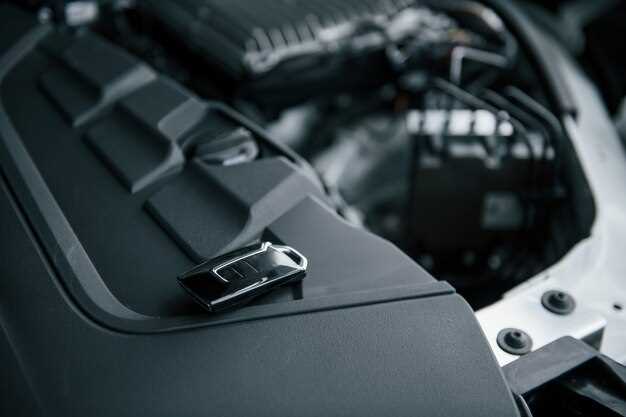
The design of a high-performance car cooling system is crucial for preventing overheating during extreme driving conditions. In the realm of automotive engineering, a well-optimized cooling system not only enhances engine efficiency but also prolongs the lifespan of various components. As engines produce significant amounts of heat, effectively managing this thermal output is essential to maintain performance and reliability.
One of the primary objectives in cooling system design is to achieve a balance between adequate heat dissipation and minimal energy loss. This requires a deep understanding of the various components involved, including radiators, water pumps, and cooling fans. Each component must work harmoniously within the system to ensure optimal thermal management, particularly in high-stress scenarios such as racing or heavy towing.
Moreover, modern cooling systems employ advanced technologies, such as variable speed pumps and electronic thermostats, to adapt to changing operational conditions. These innovations allow for a more responsive cooling strategy, reducing the risk of overheating while maximizing overall performance. By integrating such features, engineers can fine-tune the system to cater to the specific needs of high-performance vehicles, resulting in improved efficiency and power delivery.
Understanding Overheating Causes in High-Performance Vehicles
Overheating is a critical concern for high-performance vehicles, where engine efficiency and power output are prioritized. Several factors can contribute to this issue, making it essential for engineers and enthusiasts to understand the underlying causes.
One of the primary reasons for overheating is inadequate cooling system design. High-performance engines generate significantly more heat than standard ones, requiring an effective cooling mechanism. If the radiator capacity or coolant flow is insufficient, the engine may not dissipate heat effectively, leading to elevated temperatures.
Another cause is the choice of coolant. Not all coolants are created equal; specific formulations offer better heat transfer properties and can withstand higher temperatures. Using an inferior coolant can compromise the cooling system’s performance, thus increasing the risk of overheating during intense driving conditions.
Moreover, a malfunctioning thermostat can disrupt the flow of coolant within the system. If the thermostat fails to open at the correct temperature, it may lead to localized overheating in the engine. Regular checks and maintenance of this component are vital to ensure optimal performance.
Additionally, blockages in hoses or radiators can impede coolant circulation. Dirt, rust, or debris can accumulate over time, significantly reducing the efficiency of the cooling system. Ensuring that these components are clean and free of obstructions is crucial for maintaining proper engine temperatures.
Lastly, improper tuning or excessive modifications can also lead to overheating. High-performance vehicles often undergo alterations to increase power output, but without adequate adjustments to the cooling system, these enhancements can result in an inability to manage the additional heat produced.
Understanding these causes is essential for preventing overheating in high-performance vehicles. By implementing effective design strategies and maintaining the cooling system, drivers can ensure their engines operate within safe temperature ranges even under extreme conditions.
Optimizing Radiator Selection and Placement for Maximum Heat Dissipation

In high-performance car cooling systems, the choice and positioning of the radiator play a crucial role in effective heat dissipation. Selecting a radiator with optimal dimensions and design can significantly enhance the cooling efficiency, thus preventing engine overheating during extreme driving conditions.
Radiator Material: The material of the radiator is a key factor influencing heat transfer capabilities. Aluminum radiators are favored for their lightweight properties and excellent thermal conductivity. This choice helps in reducing the overall weight of the cooling system while maximizing heat dissipation.
Core Design: The design of the radiator core, including the number of rows and fins per inch, directly impacts the surface area available for heat exchange. A multi-row core increases the cooling capacity, allowing for better heat dissipation in high-performance scenarios. It is essential to balance airflow requirements with cooling efficiency to avoid pressure drop issues.
Placement Optimization: The positioning of the radiator within the engine bay is another critical aspect. Ideally, the radiator should be placed in a location that maximizes airflow from the front of the vehicle while minimizing obstructions. A tilt angle may be considered, as it can improve airflow dynamics and assist in heat removal.
Airflow Management: Proper management of airflow around the radiator is vital for enhancing its cooling performance. Employing ducting or shrouding can help direct air through the radiator more effectively, preventing turbulence and ensuring a steady flow over the surface. This strategy not only increases heat dissipation but also improves overall system efficiency.
Testing and Tuning: Once the radiator is selected and positioned, thorough testing under different driving conditions is essential. Monitoring engine temperatures can provide insights into the radiator’s performance. Adjustments in placement or the addition of auxiliary fans may be required to achieve optimal heat dissipation during high-demand scenarios.
By strategically selecting and placing the radiator, automotive engineers can create a high-performance cooling system capable of maintaining optimal engine temperatures under various operating conditions. This not only enhances vehicle reliability but also ensures peak performance during intense driving experiences.
Enhancing Cooling Fluid Properties for Improved Thermal Management

Effective thermal management in high-performance vehicles is crucial to prevent overheating and ensure optimal engine performance. One of the key strategies for improving thermal management is the enhancement of cooling fluid properties. By optimizing the chemical composition and physical characteristics of the cooling fluid, engineers can significantly impact the efficiency of heat transfer within the cooling system.
Modern coolant formulations are designed to provide superior heat transfer capabilities. The inclusion of additives such as surfactants and corrosion inhibitors can reduce the formation of bubbles and diminish surface tension, thereby enhancing the fluid’s ability to effectively absorb and dissipate heat. Additionally, using nanofluids–engineered fluids that contain nanometer-sized particles–can further improve thermal conductivity, allowing for more efficient cooling during high-stress conditions.
Another crucial aspect of enhancing cooling fluid properties is managing the fluid’s viscosity. Lower viscosity fluids can flow more freely, facilitating quicker heat exchange and reducing the risk of localized overheating. However, it is important to strike a balance, as overly low viscosity may lead to inadequate lubrication within the system components. Advances in synthetic coolant formulations enable the creation of fluids that maintain stable viscosity across a wider temperature range, ensuring reliable performance under extreme thermal conditions.
Furthermore, temperature consistency can be maintained through the careful selection of base fluids. Water-based coolants, often enhanced with ethylene glycol or propylene glycol, provide excellent heat transfer properties. However, they can fall short in extreme thermal stress situations. Exploring the use of alternative fluids, such as dielectric fluids, can offer improved thermal stability and heat capacity, reducing the chances of overheating effectively.
In addition to improving fluid properties, regular analysis and maintenance of the cooling system are essential. Monitoring the coolant’s quality through fluid analysis can help identify degradation over time, allowing for timely replacements which ensure sustained thermal performance. This proactive approach minimizes the risk of system failures and enhances overall vehicle reliability.
In conclusion, enhancing cooling fluid properties through advanced formulations, careful viscosity management, and alternative fluid selection plays a pivotal role in achieving superior thermal management. This comprehensive approach not only helps prevent overheating but also prolongs the operational life of high-performance vehicles, ultimately leading to better performance and reliability on the road.



